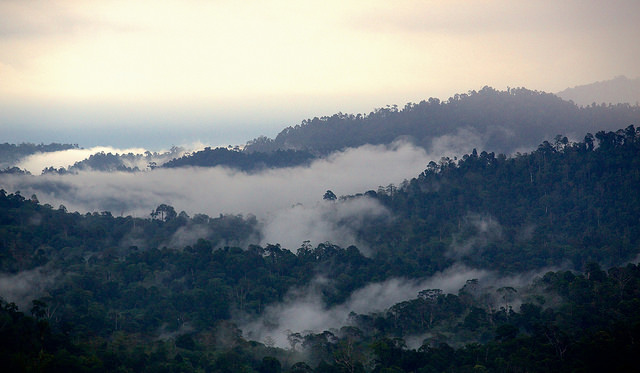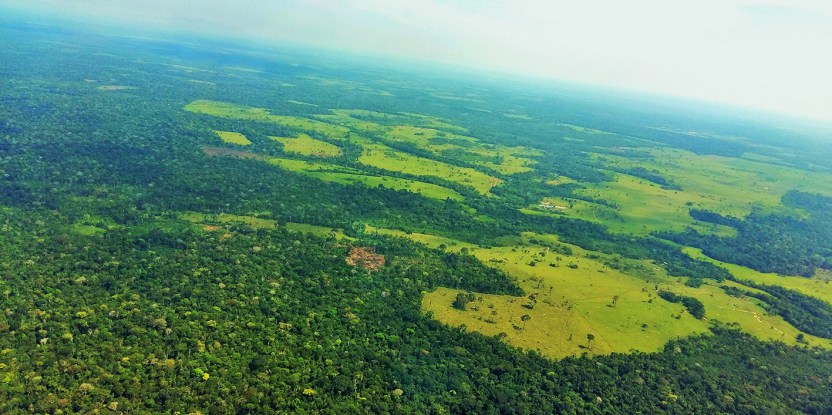
The 21st Conference of the Parties (or COP21) in Paris, France last year invited the Intergovernmental Panel on Climate Change (IPCC) to provide a Special Report in 2018 on the impacts of global warming of 1.5°C above pre-industrial levels and related global greenhouse gas emission pathways.
In April of this year, the IPCC accepted the UNFCCC’s challenge. A Steering Committee was subsequently established, chaired by IPCC Vice Chair Dr. Thelma Krug of Brazil, who is also a new member of CIFOR’s Board of Trustees.
To develop the scope and outline of the Special Report on 1.5°C, a scoping meeting will be held in Geneva, Switzerland from 15 to 17 August, which will result in a draft ‘Scoping Paper’ describing its objectives, process and timeline.
The agenda for this meeting is broad, and includes topics like global climate and carbon models, mitigation in agriculture, food systems, forestry and land use, as well as vulnerability and adaptation of natural and human systems.
At this moment, there are 83 hand picked scientists from around the world packing their bags to participate in the event. What will this session mean for forests and land use change?
First, let’s examine the geographical breakdown of the participants The balance between developed and developing countries is good, close to 50/50, with the United States being the most represented country in the room with 11 scientists, followed by Germany with six scientists. China on the other hand, which boasts the world’s largest population and is among the world’s largest carbon emitters, has only three scientists in the room.
A handful of experts on land use, mostly related to agriculture and food security, will attend. Experts on forests are underrepresented, with few attendees having any background in forests and climate change. To be fair, there will be more focus on forests and land-use in a subsequent special report to come from the IPCC. However, given the high dependence placed on ‘carbon sinks’ as a core element of the Paris Agreement’s long-term goal (contained in Article 4.1), and the investments and policy advancements made in the UNFCCC on REDD+, the low number of forest experts comes as a surprise.
There is no question that the 1.5°C temperature target outcome in Paris took the science world by surprise. Scientists engaged in work related to land use change and forests are no exception to this, with a scarce amount of literature on the role of forests and land in pathways to achieve 1.5°C. Many organizations and governments are currently undertaking internal reviews to determine how to best address the issue.
The 1.5°C outcome is being met with skepticism by some, whilst others are looking at solutions, many of which are related to bioenergy with carbon capture and storage (BECCS). It is here that there are more questions than answers.
FOOD FOR THOUGHT
The 1.5°C outcome is being met with skepticism by some, whilst others are looking at solutions, many of which are related to bioenergy with carbon capture and storage (BECCS). It is here that there are more questions than answers. There is a real need for immediate investments in strengthening the scientific evidence base, not least to determine the social and environmental impacts of relying on large-scale bioenergy.
A brief review of some of the literature that has been produced on the topic since 2015 identifies some of the key research priorities regarding the role of land in achieving 1.5°C.
These questions, listed below, could provide a good starting point for inputs into the IPCC Special reports and the climate science agenda moving forward:
- What is the sustainable supply potential for primary bioenergy, and to what degree can this be scaled up through second and third generation bioenergy?
- Is deployment of BECCS at the scale required to achieve 1.5°C feasible, and on what timescale?
- What impact will the deployment of BECCs have on food security considering current levels of poverty, a growing population and the so-called climate–food–energy nexus?
- What are the technological, social and environmental governance preconditions that would need to be met in order to avoid detrimental impacts on ecosystems, biodiversity and livelihoods from the expected scale of BECCS deployment?
- What are the nutrients, water and land availability constraints on scaling up afforestation and reforestation?
- What role can restoration of natural ecosystems play and to what extent does this reduce the reliance on afforestation, reforestation and technologies such as BECCS?
- To what degree does non-permanence vary between natural ecosystems, planted forests, and agricultural soils, and how does this impact 1.5°C pathways?
- How can threats of increased land grabs and the encroachment on land tenure rights of indigenous peoples and local communities from large-scale bioenergy and forest plantations be avoided?
- Is there any role for offset mechanisms within a 1.5°C carbon budget, and what is the relationship between offsets and achieving negative emissions?
- What are the carbon accounting implications for negative emissions, and how can accounting systems ensure bioenergy emissions are accounted for?
- To what extent does the commercial viability of BECCS rely on advanced oil recovery, and how does this relate to carbon accounting and justification of climate finance for BECCS technology development?
- Based on the experience of REDD+ to date, what role can this approach play in achieving the 1.5°C goal? Can the 1.5°C target be met without ending tropical deforestation?
The research agenda related to the role of land use and forests in achieving 1.5°C needs urgent implementation. These are just some of the many questions that require answers as we move forward both in relation to the next round of UNFCCC negotiations to implement the Paris Agreement and the IPCC processes leading up to the Sixth Assessment Report.
The scope of questions highlights the need for interdisciplinary inputs, and the involvement of a broad set of stakeholders when considering the role of land and forests in a 1.5°C world.
The next steps for the IPCC after the August scoping meeting will be in October 2016, where the IPCC will review the draft Scoping Paper and will decide on further work concerning this Special Report.
We hope that as these processes move forward, there will be more expertise and inputs concerning the role of land and forests so that these key questions can be answered, and the scientific community can create the necessary evidentiary foundations for understanding the targets and mitigation pathways to implement the Paris Agreement.
*This analysis was co-authored with Kate Dooley and Markku Kanninen.
We want you to share Forests News content, which is licensed under Creative Commons Attribution-NonCommercial-ShareAlike 4.0 International (CC BY-NC-SA 4.0). This means you are free to redistribute our material for non-commercial purposes. All we ask is that you give Forests News appropriate credit and link to the original Forests News content, indicate if changes were made, and distribute your contributions under the same Creative Commons license. You must notify Forests News if you repost, reprint or reuse our materials by contacting forestsnews@cifor-icraf.org.
